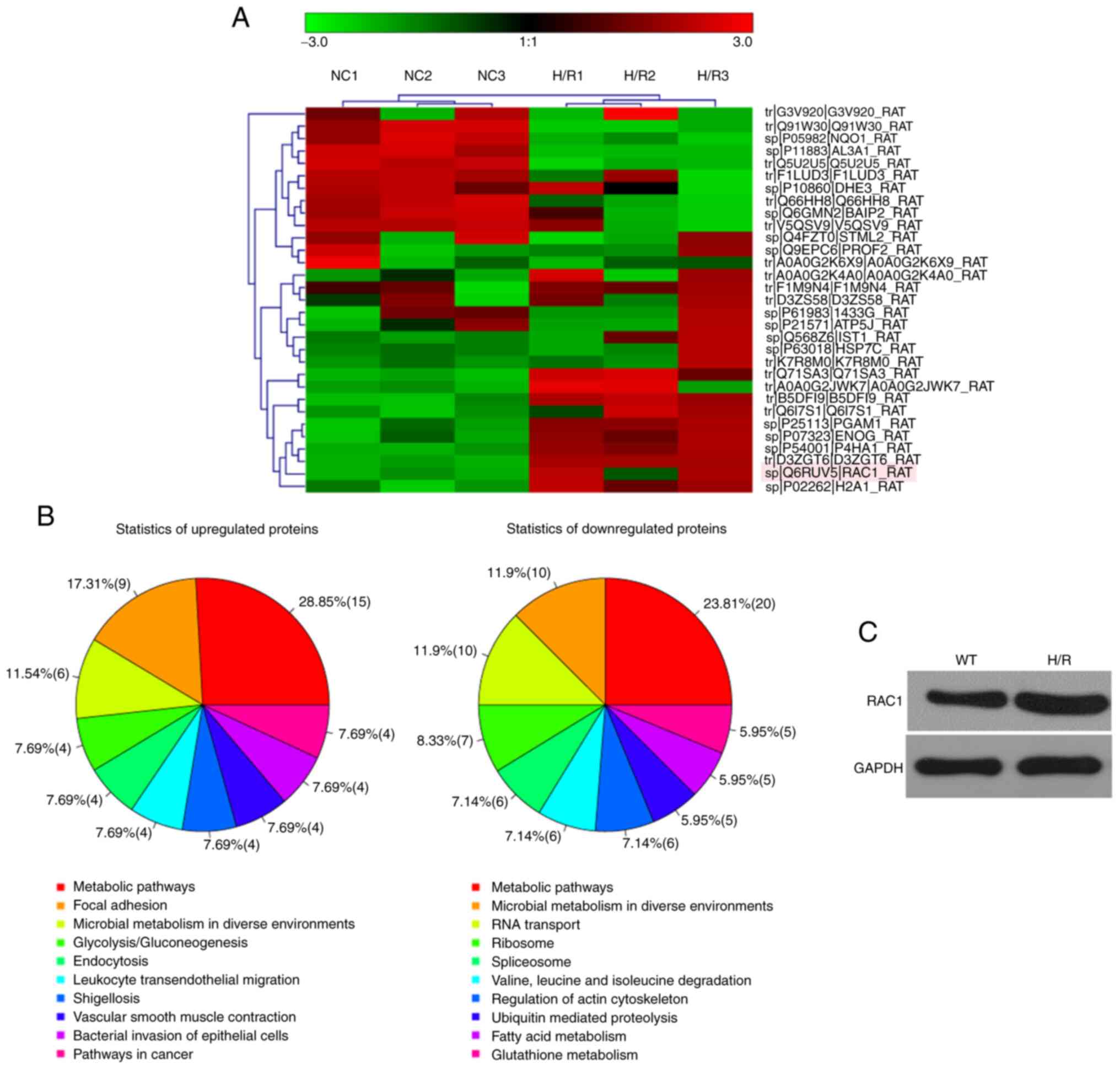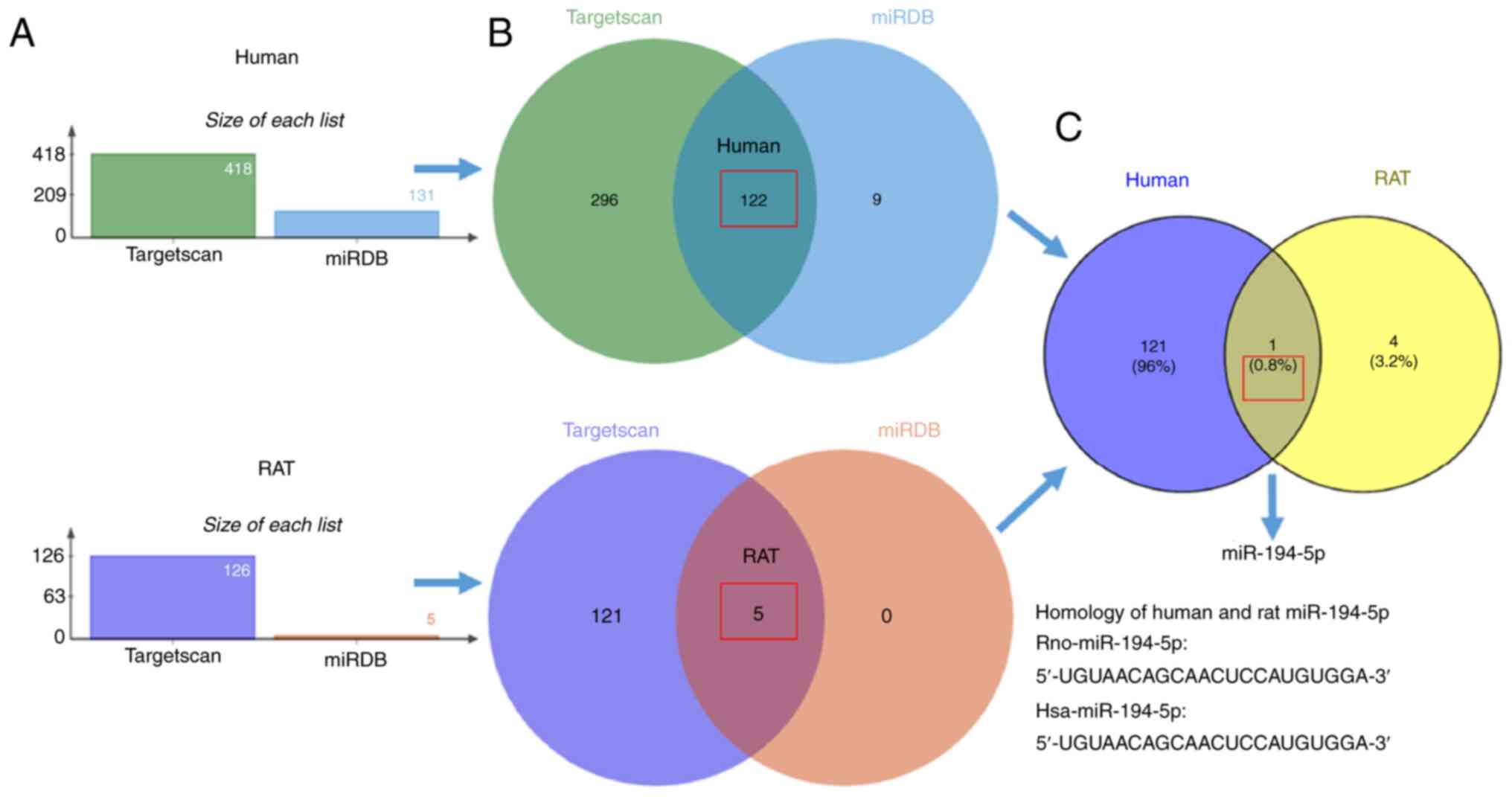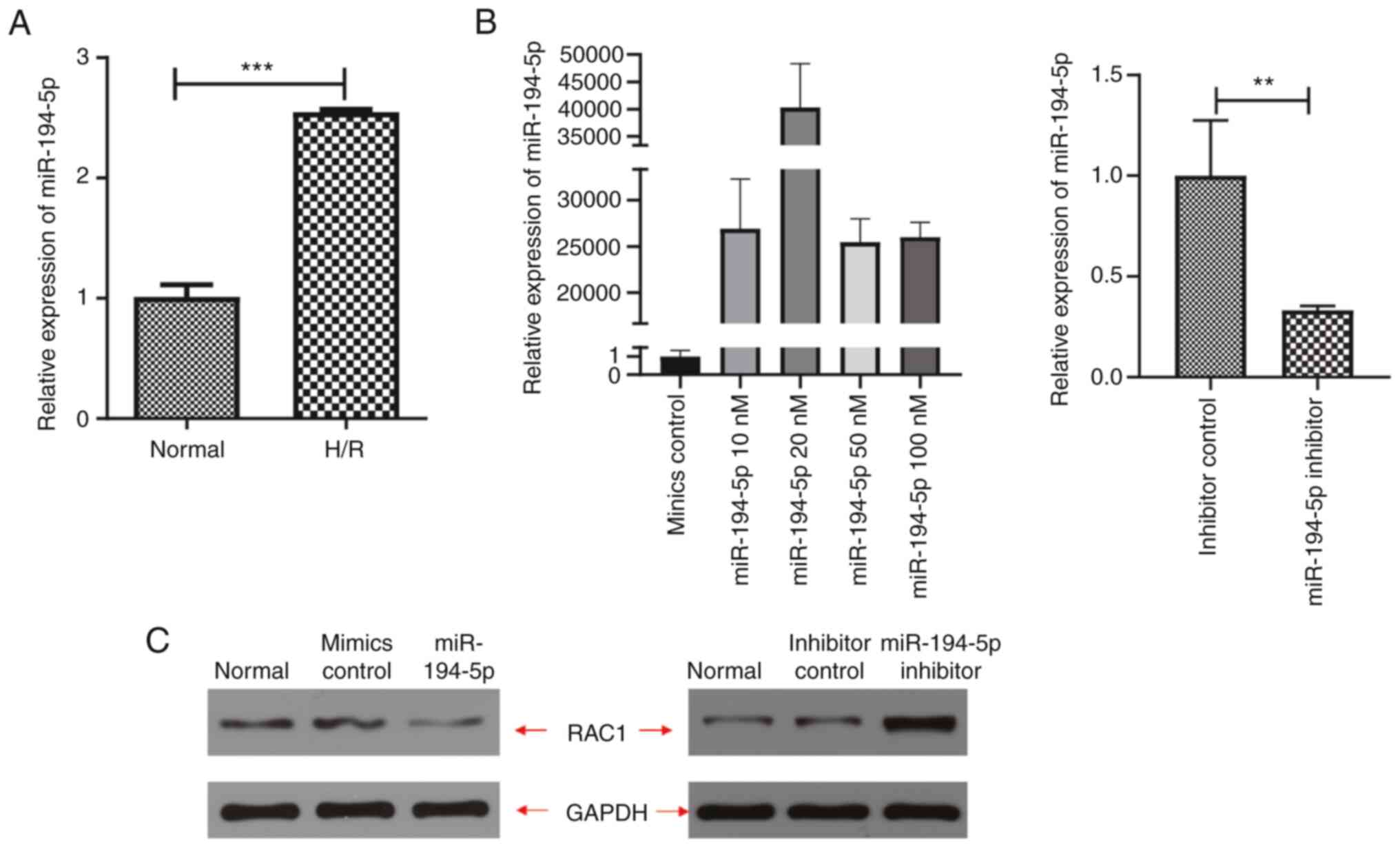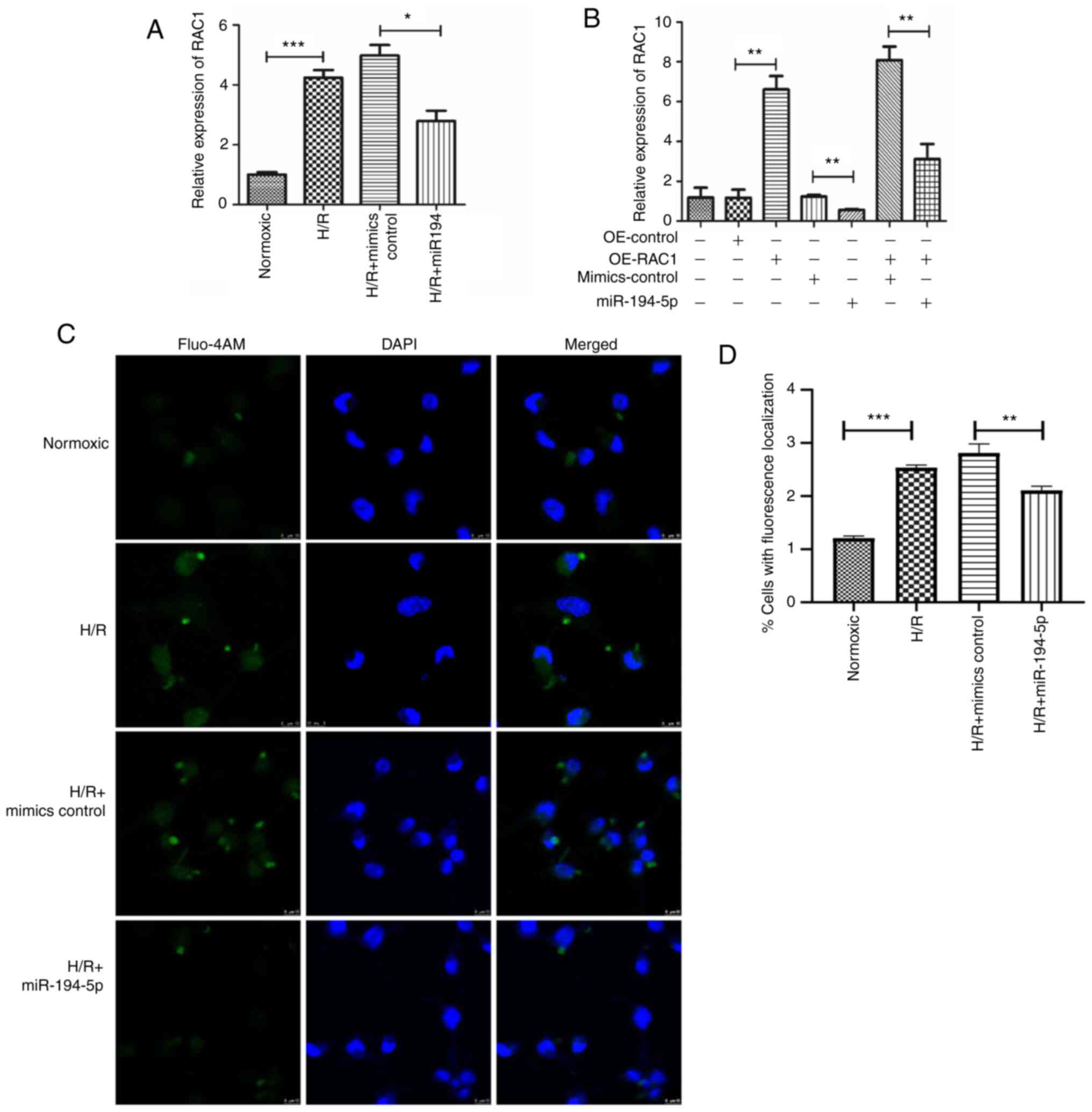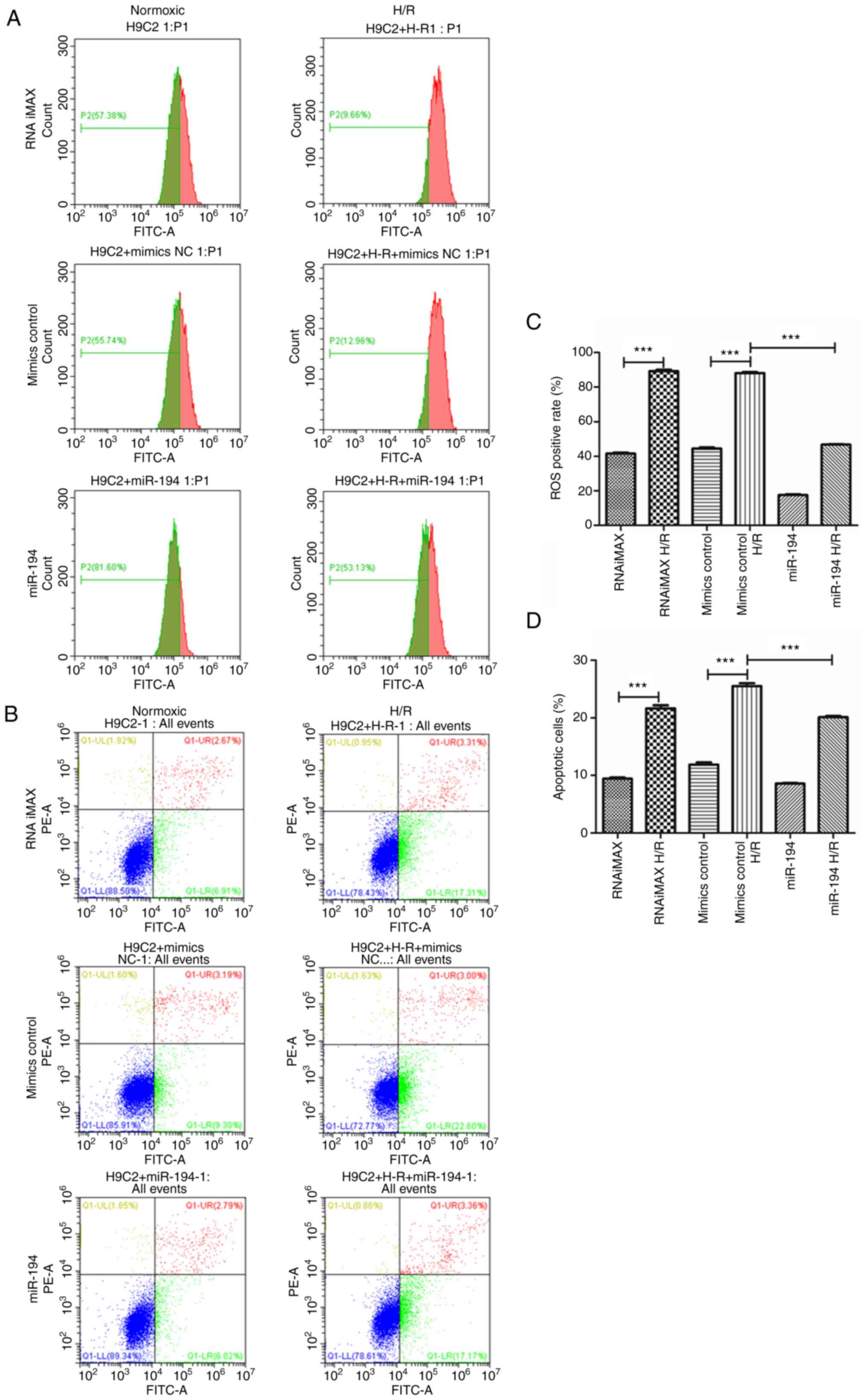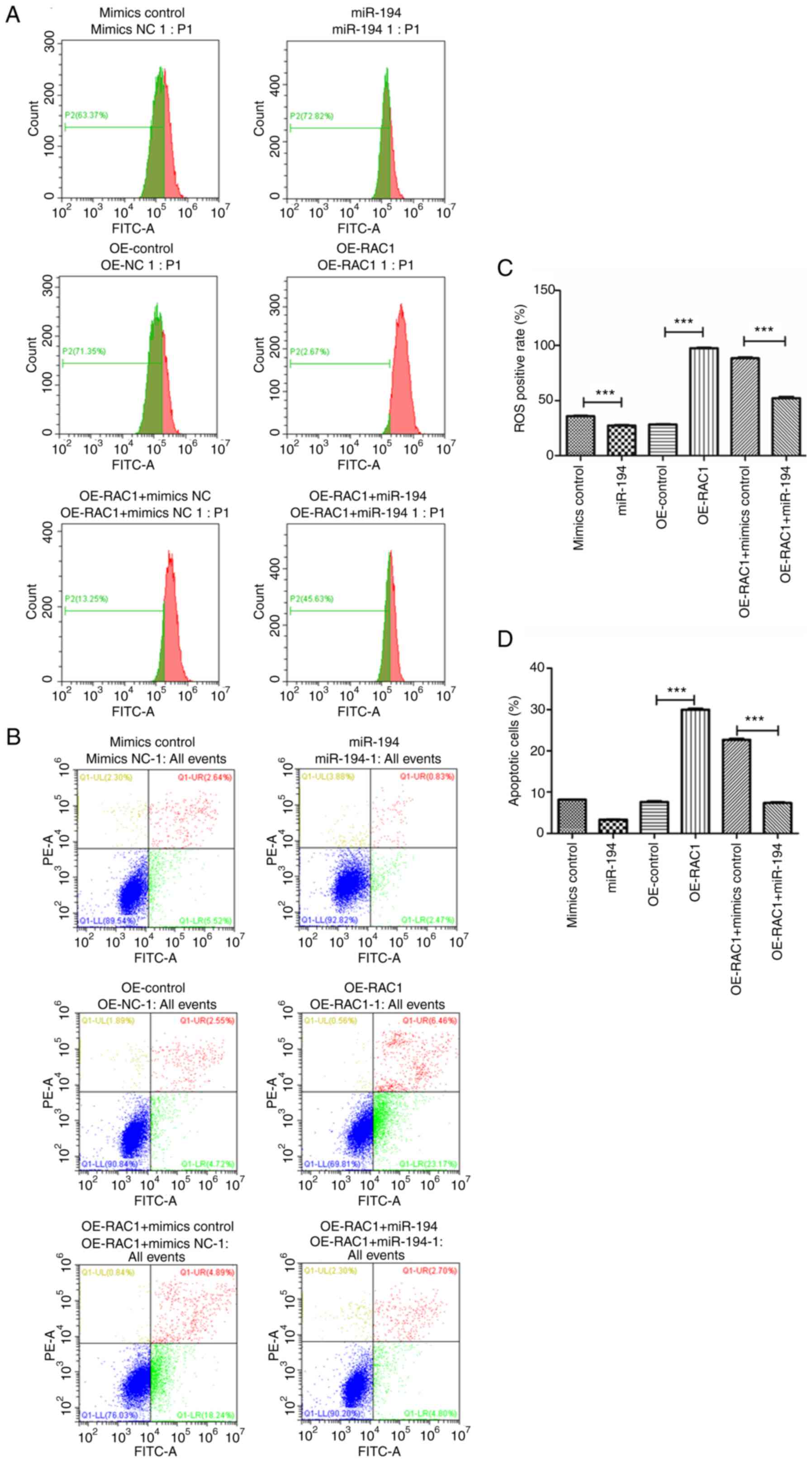|
1
|
Katritsis DG, Mark DB and Gersh BJ:
Revascularization in stable coronary disease: Evidence and
uncertainties. Nat Rev Cardiol. 15:408–419. 2018. View Article : Google Scholar : PubMed/NCBI
|
|
2
|
Benjamin EJ, Muntner P, Alonso A,
Bittencourt MS, Callaway CW, Carson AP, Chamberlain AM, Chang AR,
Cheng S, Das SR, et al: Heart disease and stroke statistics-2019
update: A report from the American heart association. Circulation.
139:e56–e528. 2019. View Article : Google Scholar : PubMed/NCBI
|
|
3
|
Araszkiewicz A, Grygier M, Lesiak M and
Grajek S: The impact of ischemia-reperfusion injury on the
effectiveness of primary angioplasty in ST-segment elevation
myocardial infarction. Postepy Kardiol Interwencyjnej. 9:275–281.
2013.PubMed/NCBI
|
|
4
|
Cadenas S: ROS and redox signaling in
myocardial ischemia-reperfusion injury and cardioprotection. Free
Radic Biol Med. 117:76–89. 2018. View Article : Google Scholar : PubMed/NCBI
|
|
5
|
Marei H and Malliri A: Rac1 in human
diseases: The therapeutic potential of targeting Rac1 signaling
regulatory mechanisms. Small GTPases. 8:139–163. 2017. View Article : Google Scholar : PubMed/NCBI
|
|
6
|
Sussman MA, Welch S, Walker A, Klevitsky
R, Hewett TE, Price RL, Schaefer E and Yager K: Altered focal
adhesion regulation correlates with cardiomyopathy in mice
expressing constitutively active rac1. J Clin Invest. 105:875–886.
2000. View
Article : Google Scholar : PubMed/NCBI
|
|
7
|
Hordijk PL: Regulation of NADPH oxidases:
The role of Rac proteins. Circ Res. 98:453–462. 2006. View Article : Google Scholar : PubMed/NCBI
|
|
8
|
Elnakish MT, Awad MM, Hassona MD, Alhaj
MA, Kulkarni A, Citro LA, Sayyid M, Abouelnaga ZA, El-Sayed O,
Kuppusamy P, et al: Cardiac remodeling caused by transgenic
overexpression of a corn Rac gene. Am J Physiol Heart Circ Physiol.
301:H868–H880. 2011. View Article : Google Scholar : PubMed/NCBI
|
|
9
|
Talukder MA, Elnakish MT, Yang F,
Nishijima Y, Alhaj MA, Velayutham M, Hassanain HH and Zweier JL:
Cardiomyocyte-specific overexpression of an active form of Rac
predisposes the heart to increased myocardial stunning and
ischemia-reperfusion injury. Am J Physiol Heart Circ Physiol.
304:H294–H302. 2013. View Article : Google Scholar : PubMed/NCBI
|
|
10
|
Yu S and Li G: MicroRNA expression and
function in cardiac ischemic injury. J Cardiovasc Transl Res.
3:241–245. 2010. View Article : Google Scholar : PubMed/NCBI
|
|
11
|
Ye Y, Perez-Polo JR, Qian J and Birnbaum
Y: The role of microRNA in modulating myocardial
ischemia-reperfusion injury. Physiol Genomics. 43:534–542. 2011.
View Article : Google Scholar : PubMed/NCBI
|
|
12
|
Abdrabou A and Wang Z: Post-translational
modification and subcellular distribution of Rac1: An Update.
Cells. 7:2632018. View Article : Google Scholar : PubMed/NCBI
|
|
13
|
Jiang ZB, Ma BQ, Liu SG, Li J, Yang GM,
Hou YB, Si RH, Gao P and Yan HT: miR-365 regulates liver cancer
stem cells via RAC1 pathway. Mol Carcinog. 58:55–65. 2019.
View Article : Google Scholar : PubMed/NCBI
|
|
14
|
Gao X, Xu W, Lu T, Zhou J, Ge X and Hua D:
MicroRNA-142-3p promotes cellular invasion of colorectal cancer
cells by activation of RAC1. Technol Cancer Res Treat.
17:15330338187905082018. View Article : Google Scholar : PubMed/NCBI
|
|
15
|
Wang X, Zhang Y, Wang H, Zhao G and Fa X:
MicroRNA-145 aggravates hypoxia-induced injury by targeting Rac1 in
H9c2 cells. Cell Physiol Biochem. 43:1974–1986. 2017. View Article : Google Scholar : PubMed/NCBI
|
|
16
|
Meng Z, Wang Y, Lin Y, Nan S, Xu W, Hu B
and Shen E: MicroRNA-182 modulates high glucose-induced
cardiomyocyte hypertrophy via targeting Rac1. Zhonghua Xin Xue Guan
Bing Za Zhi. 43:619–624. 2015.(In Chinese). PubMed/NCBI
|
|
17
|
Moulder R, Bhosale SD, Goodlett DR and
Lahesmaa R: Analysis of the plasma proteome using iTRAQ and
TMT-based Isobaric labeling. Mass Spectrom Rev. 37:583–606. 2018.
View Article : Google Scholar : PubMed/NCBI
|
|
18
|
Cao XB, Jiang ZH, Dong L, Zheng Y and Li
Y: Effects of modulation of ion channel currents by salidroside in
H9C2 myocardial cells in hypoxia and reoxygenation. Evid Based
Complement Alternat Med. 2019:82128682019. View Article : Google Scholar : PubMed/NCBI
|
|
19
|
Zhang P, Zhu S, Zhao M, Zhao P, Zhao H,
Deng J and Li J: Identification of plasma biomarkers for diffuse
axonal injury in rats by iTRAQ-coupled LC-MS/MS and bioinformatics
analysis. Brain Res Bull. 142:224–232. 2018. View Article : Google Scholar : PubMed/NCBI
|
|
20
|
Wu Y, Liu F, Ma X, Adi D, Gai MT, Jin X,
Yang YN, Huang Y, Xie X, Li XM, et al: iTRAQ analysis of a mouse
acute myocardial infarction model reveals that vitamin D binding
protein promotes cardiomyocyte apoptosis after hypoxia. Oncotarget.
9:1969–1979. 2018. View Article : Google Scholar : PubMed/NCBI
|
|
21
|
Livak KJ and Schmittgen TD: Analysis of
relative gene expression data using real-time quantitative PCR and
the 2(−Delta Delta C(T)) method. Methods. 25:402–408. 2001.
View Article : Google Scholar : PubMed/NCBI
|
|
22
|
Abo A, Pick E, Hall A, Totty N, Teahan CG
and Segal AW: Activation of the NADPH oxidase involves the small
GTP-binding protein p21rac1. Nature. 353:668–670. 1991. View Article : Google Scholar : PubMed/NCBI
|
|
23
|
Elnakish MT, Moldovan L, Khan M, Hassanain
HH and Janssen PML: Myocardial Rac1 exhibits partial involvement in
thyroxin-induced cardiomyocyte hypertrophy and its inhibition is
not sufficient to improve cardiac dysfunction or contractile
abnormalities in mouse papillary muscles. J Cardiovasc Pharmacol.
61:536–544. 2013. View Article : Google Scholar : PubMed/NCBI
|
|
24
|
Zhao Y, Ponnusamy M, Dong Y, Zhang L, Wang
K and Li P: Effects of miRNAs on myocardial apoptosis by modulating
mitochondria related proteins. Clin Exp Pharmacol Physiol.
44:431–440. 2017. View Article : Google Scholar : PubMed/NCBI
|
|
25
|
Zhao ZQ: Oxidative stress-elicited
myocardial apoptosis during reperfusion. Curr Opin Pharmacol.
4:159–165. 2004. View Article : Google Scholar : PubMed/NCBI
|
|
26
|
Diao X, Shen E, Wang X and Hu B:
Differentially expressed microRNAs and their target genes in the
hearts of streptozotocin-induced diabetic mice. Mol Med Rep.
4:633–640. 2011.PubMed/NCBI
|















